Water Tube Boiler Inspection is one of the most critical processes in the manufacturing and operation of water tube boilers, directly impacting the safety, efficiency, and lifespan of the equipment. In this text, we will introduce you to the various stages of water tube boiler inspection—from fabrication and installation, pre-startup testing, to periodic inspections during operation and advanced NDT methods. Additionally, national and international standards, safety and control equipment, and safety precautions during inspection will also be discussed. By continuing with this article, you will become familiar with the precise and systematic process of a standard inspection and see how each step contributes to enhancing the safety and efficiency of the boiler.
When should a water tube boiler inspection be performed?
At PetroEnergyMan, Water Tube Boiler Inspection is conducted at three main stages, each with its own specific requirements and methods.
Inspection During Fabrication
This inspection begins at the start of the manufacturing process and includes the following five key steps:
• Material verification: Ensuring the quality of essential materials (tubes, plates, flanges) and welding consumables used in the water tube boiler in accordance with applicable standards.
• Welding qualification control: Verification of welders’ qualifications and Welding Procedure Specifications (WPS).
• Dimensional inspection: Accurate measurement checks at various stages of production, based on design drawings and tolerances.
• Visual inspection and NDT: Continuous monitoring and performing Non-Destructive Testing (NDT) on welds to ensure defect-free construction.
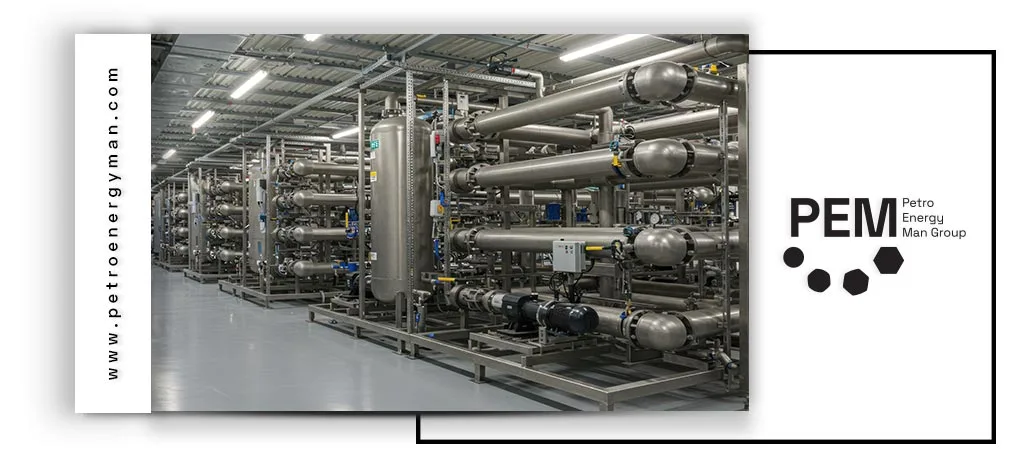
Pre-Startup Boiler Inspection
This inspection takes place after the installation is fully completed and before the first actual operation, to ensure complete system readiness.
Key Stages of the Inspection Process
This phase involves four essential steps:
• Review of installation documents (drawings and certifications).
• Visual inspection (surfaces, insulation, and connections).
• Hydrostatic testing (verification of strength and leak-tightness under pressure).
• Testing of safety and control equipment (relief valves, sensors, and controllers).
(Detailed explanations of each step will be provided in later sections.)
Water Tube Boiler Inspection During Operation
Water Tube Boiler Inspection during service and operation is performed throughout the boiler’s lifespan to ensure safety and efficiency at regular intervals. This process includes three main types of activities:
- Internal and external inspection: Shutting down the boiler and conducting a thorough visual examination to identify defects.
• On-stream inspection: Continuous monitoring of key operating parameters such as pressure and temperature.
• Periodic NDT testing: Applying non-destructive tests to evaluate corrosion and erosion in critical parts.
Detailed explanations of each inspection type will be provided in the following sections.
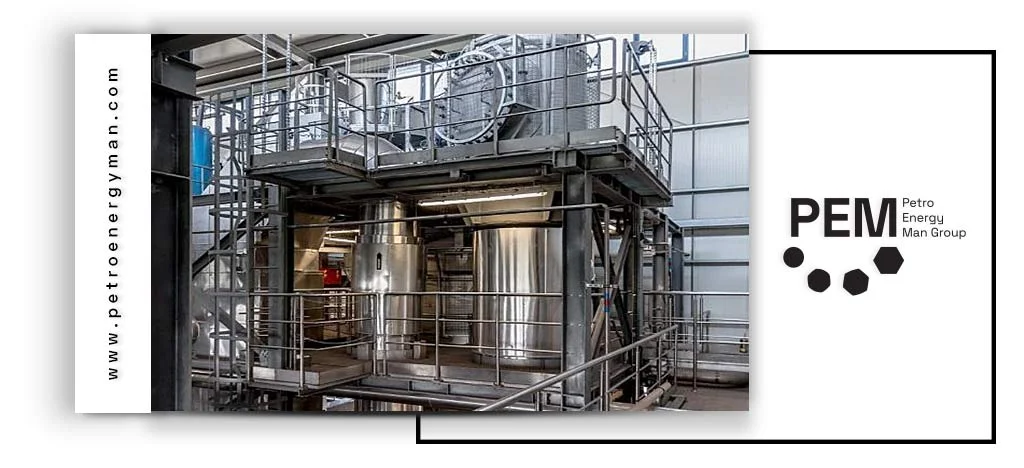
Which standards apply to water tube boiler inspection?
Water Tube Boiler Inspection Procedure requires adherence to a set of standards at both national and international levels. These standards ensure safety, quality, and regulatory compliance throughout the inspection and manufacturing process.
National Standards of Iran
The Institute of Standards and Industrial Research of Iran (ISIRI) has issued mandatory standards specifically for inspection during the fabrication phase of boilers:
- ISIRI 4231 & ISIRI 7911: ISIRI 4231 is one of the mandatory standards issued by ISIRI, focusing on inspection and quality control of steam boilers during construction. ISIRI 7911 serves as a complementary standard. Together, they provide a structured framework for inspection during fabrication of steam boilers and hot water boilers.
- ISIRI 11739: This standard is titled “Safety Regulations and Requirements for Steam Generators and Hot Water Boilers”. It defines the minimum requirements for inspection, testing, certification, and maintenance of steam and hot water boilers. The code emphasizes that all manufactured boilers must obtain a standard certification plate from an inspection body approved by Iran’s National Accreditation Center.
- ISIRI 11740: This standard includes the safety requirements for the design, construction, and testing of industrial boilers.
International Standards for Water Tube Boiler Inspection
When inspecting water tube boilers, adherence to international standards is essential to ensure safety, efficiency, and regulatory compliance. Some of the most widely recognized standards are:
- ASME Boiler and Pressure Vessel Code: This is one of the most important and globally used codes for the design, fabrication, and inspection of boilers and pressure vessels. It establishes mandatory requirements and guidelines to ensure safe and reliable boiler construction and inspection
- EN 12952 & EN 12953 Standards: These European standards include specific requirements for industrial boilers.
- EN 12952 focuses on water tube boilers (watertube boilers).
- EN 12953 applies to fire tube boilers (firetube boilers).
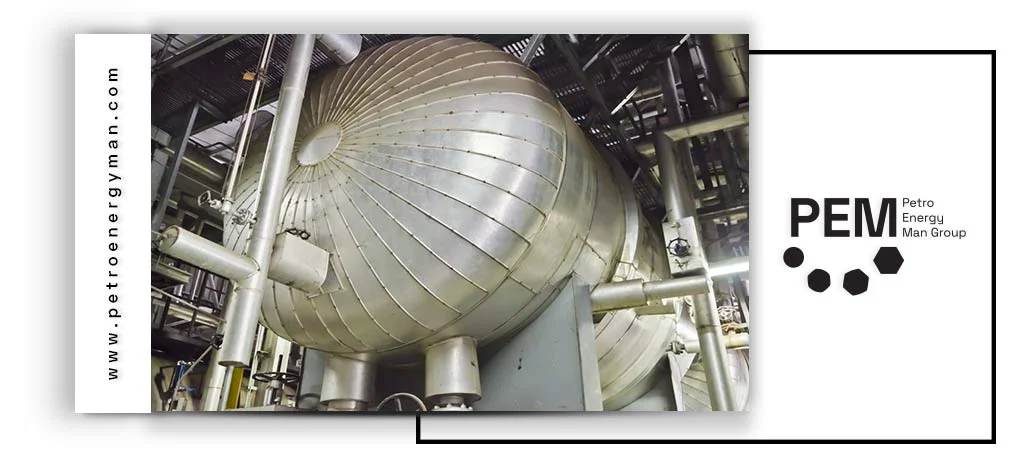
Types of Water Tube Boiler Inspection
Water tube boiler inspection can be classified into several main types to ensure safety, performance, and compliance with relevant standards:
Document and Records Review
This category involves a thorough examination and verification of all records associated with the boiler throughout its lifecycle. For example, manufacturing data, material quality certificates, and results of prior inspections—including in-process inspections—must be carefully reviewed. The goal is to confirm the boiler’s compliance with applicable standards and regulations and to assess its performance and maintenance history. This process is typically carried out during periodic inspections as well as during in-service and construction-phase inspections to ensure adherence to all technical and safety requirements at every stage.
Visual Inspection (External & Internal)
Visual inspection of a water tube boiler includes two key aspects—internal and external examination:
Internal Inspection: The inspector carefully reviews all internal surfaces of the boiler, including tube banks, tube ends, and the furnace area. The aim is to detect signs of corrosion, cracking, or deposit buildup.
External Inspection: This process focuses on identifying physical damage, leaks, or visible defects on the outer surfaces. Additionally, the performance of critical control devices such as the safety valve, pressure switch, level controller, burner sensor, and exhaust thermostat is thoroughly evaluated during this stage.
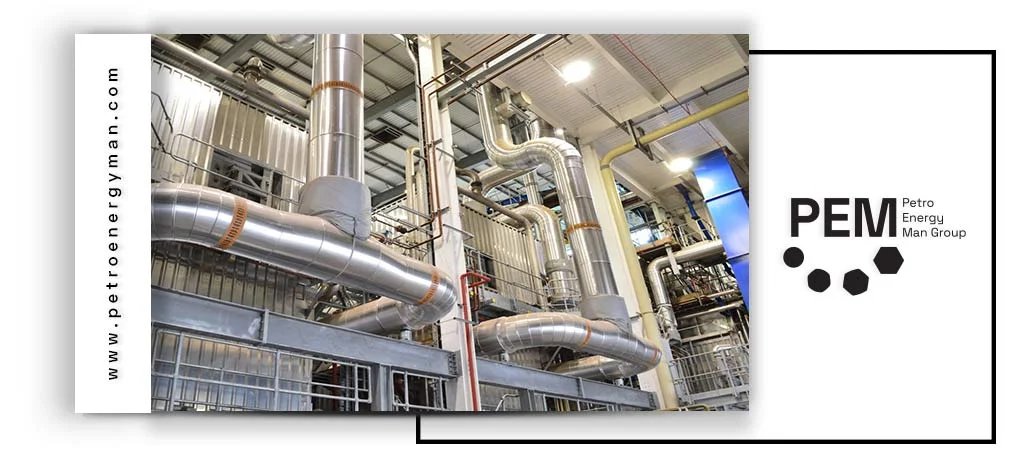
Safety and Control System Evaluation
Water Tube Boiler Inspection Procedure involves the regular and precise evaluation of the boiler’s safety and control systems, forming the foundation for maintaining operational safety, extending equipment life, and ensuring optimal performance. This procedure includes testing and calibrating all major components that monitor and control operating conditions to prevent any potential hazards. Performing these inspections at least once a year is mandatory.
During the inspection, three main categories of equipment are closely assessed: safety valves, water level controllers, and pressure sensors. Safety valves act as the final line of defense in pressurized systems, and their accurate calibration is essential to ensure proper and timely operation. These valves must open at set pressures, typically between 10% and 15% above the boiler’s operating pressure. Calibration is carried out using media such as air, water, or steam and involves precise measurement of the set pressure, full lift pressure (POP), and reseating pressure (Back Pressure) to guarantee both safety and efficiency.
Water level controllers are also checked to prevent issues related to low or excessive water levels, while pressure sensors—including pressure switches—are tested to verify correct monitoring and accurate feedback. Calibration of these sensors is done using certified pressure sources and display instruments.
Additionally, flame sensors and exhaust thermostats are included in the inspection checklist to ensure the proper functioning of the combustion system and exhaust flow. Whether performed daily or annually, all these inspections are designed to secure pressure lines, prevent overpressure, and avoid catastrophic failures.
Specialized Inspections and Non-Destructive Testing (NDT)
Water Tube Boiler Inspection includes specialized inspections and Non-Destructive Testing (NDT), which are advanced methods used to evaluate the structural integrity and performance of boilers without causing any damage to them. These inspections provide critical information about the current condition of the boiler and help in the early detection of potential issues.
Thickness Measurement Testing
This test is performed to determine the extent of corrosion or wear in the walls and tubes of the boiler. Using Ultrasonic Testing (UT) devices, the thickness of different parts of the boiler—such as the shell, furnace, and end plates—is precisely measured. This helps prevent unsafe wall thinning that may reduce the boiler’s strength and safety. The primary goal of this test is to prevent accidents due to excessive corrosion and ensure the long-term structural integrity of the boiler.

Hydrostatic Testing
The hydrostatic test is designed to evaluate the strength and leakage resistance of the boiler under high operational pressures. In this process, the boiler is filled with water and pressurized up to 150% of its maximum allowable working pressure, which is then maintained for a specified duration. During this period, inspectors thoroughly check all joints, tubes, and welded areas for any signs of leakage, deformation, or structural failure to ensure full safety and integrity.
Specialized NDT Methods
Water Tube Boiler Inspection Procedure often includes advanced Non-Destructive Testing (NDT) methods to detect internal defects without causing damage to the equipment. These tests are crucial for evaluating the structural health and performance of the boiler.
Ultrasonic Testing (UT)
Ultrasonic testing uses high-frequency sound waves (above 20,000 Hz) to detect internal flaws such as cracks, voids, or separations within boiler materials. A transducer sends sound waves into the component, and the reflected signals from discontinuities are analyzed. This method is highly precise and widely used to inspect welds and other critical parts of the boiler.
Radiographic Testing (RT)
Radiographic testing employs X-rays or gamma rays to identify hidden defects in welds and metal structures. The radiation passes through the component and creates an image on a radiographic film or digital sensor. Defective areas show up as variations in contrast, allowing inspectors to pinpoint issues like cracks or porosity.
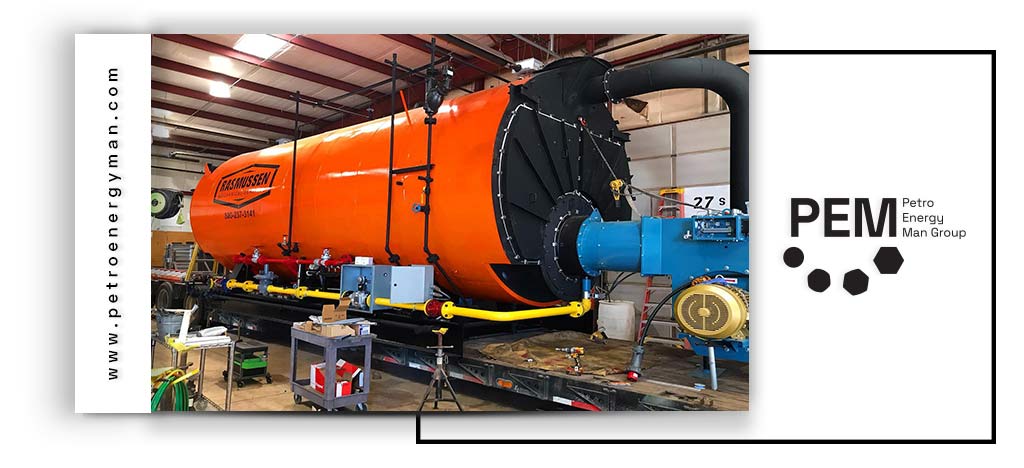
Thermographic Inspection
Thermographic inspection is a non-contact method that uses infrared cameras to detect abnormal hot or cold spots on the boiler’s surface. These temperature variations may indicate insulation failures, thermal losses, or early-stage corrosion. Thermal imaging provides a quick and visual assessment of the boiler’s thermal integrity, aiding in preventive maintenance.
Operational and Pre-Startup Checks
Water Tube Boiler Inspection Procedure during operation focuses on ensuring safe, efficient, and reliable boiler performance under real working conditions. These inspections help detect and address any defects, irregularities, or performance deviations in a timely manner, preventing costly failures or hazardous incidents. They include periodic checks of all boiler components and associated systems.
Pre-Startup and Post-Repair Inspection
Conducting an inspection after initial installation and before startup ensures the boiler is properly assembled and all components are in optimal condition for safe operation. This type of inspection is crucial for preventing potential hazards and ensuring the long-term efficiency and durability of the boiler.
Water Tube Boiler Inspection Safety Notes and Requirements
Due to potential hazards such as high pressure, extreme heat, and the presence of combustible materials, Water Tube Boiler Inspection must always be performed with strict adherence to safety protocols. Observing proper safety procedures during inspection and operation ensures the protection of both personnel and equipment.
Use of Personal Protective Equipment (PPE)
Operators and inspectors must wear appropriate PPE to safeguard themselves from potential hazards during the inspection process. Essential protective items include:
• Protective clothing: Flame- and heat-resistant workwear must be worn to prevent burns from hot materials or steam.
• Safety shoes: Safety footwear is required to protect feet from heavy falling objects, hot surfaces, and exposure to chemicals.
• Heat-insulated gloves: To avoid burns when touching hot surfaces, heat-resistant gloves must be used.
• Safety goggles: Eye protection is essential to guard against dust, steam, and chemical splashes
Lockout/Tagout Procedure
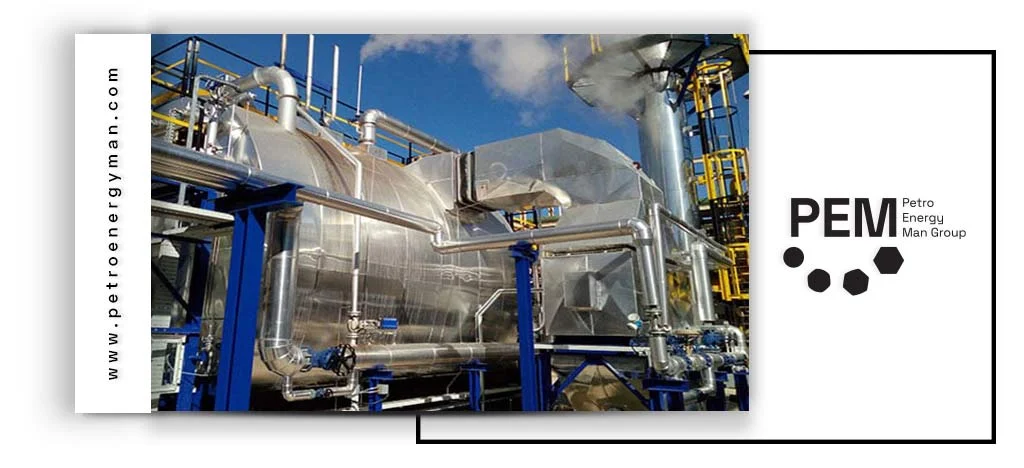
The Lockout/Tagout (LOTO) process is a critical safety measure that prevents accidental boiler startup during inspection or maintenance.
• Complete energy isolation: Before any inspection or repair, all energy sources—electricity, fuel, feedwater, and steam lines—must be completely disconnected and isolated.
• Locking and labeling: Valves and switches must be securely locked and tagged with warning signs to prevent accidental operation and potential injury.
Confined Space Entry Requirements
When Water Tube Boiler Inspection involves internal examination, strict confined space entry regulations must be followed:
• Cooling and depressurization: The boiler must be fully cooled, and all internal steam and pressure released.
• Proper ventilation: Ensure adequate airflow inside the boiler.
• Gas testing: Oxygen levels and concentrations of flammable or toxic gases must be measured and confirmed safe before entry.
• Entry permit: Personnel may only enter the confined space with an official entry permit and under supervision of an authorized safety officer.
• Physical protection: The top of the boiler should be equipped with guardrails, and ladders must be provided for safe access during inspection activities.
Conclusion
Water Tube Boiler Inspection Procedure covers the main inspection steps, safety measures, and testing standards that ensure boiler integrity and safe performance. Following these guidelines helps extend boiler life, improve efficiency, and prevent operational risks.

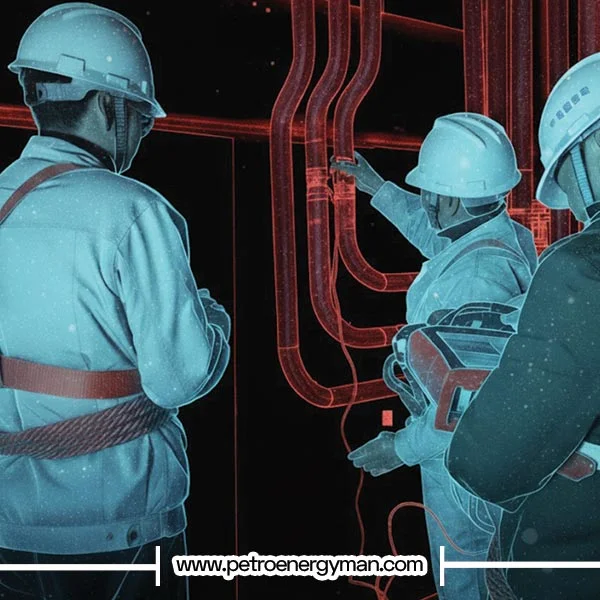

No comment